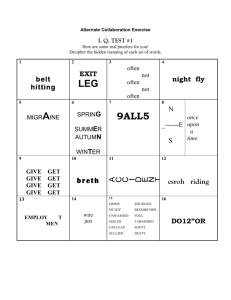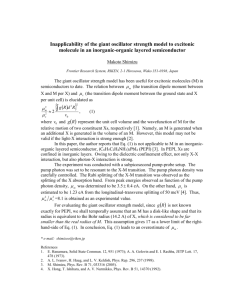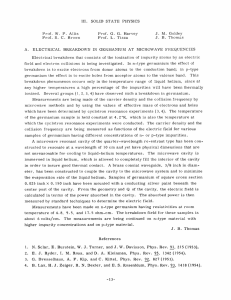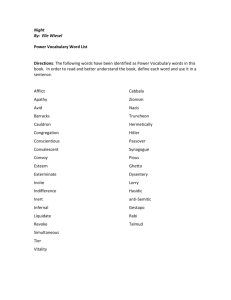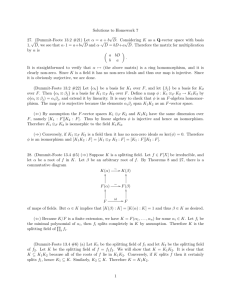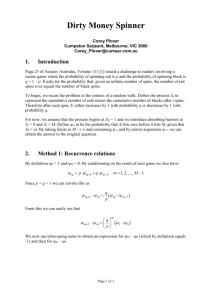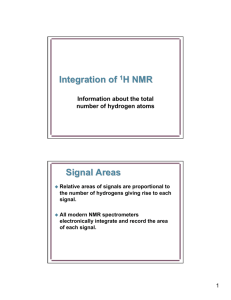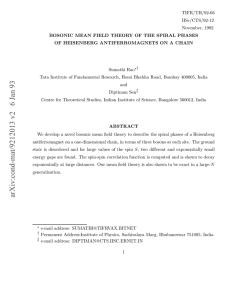Spectroscopic characteristics of a microwave cavity at - TU-MRS
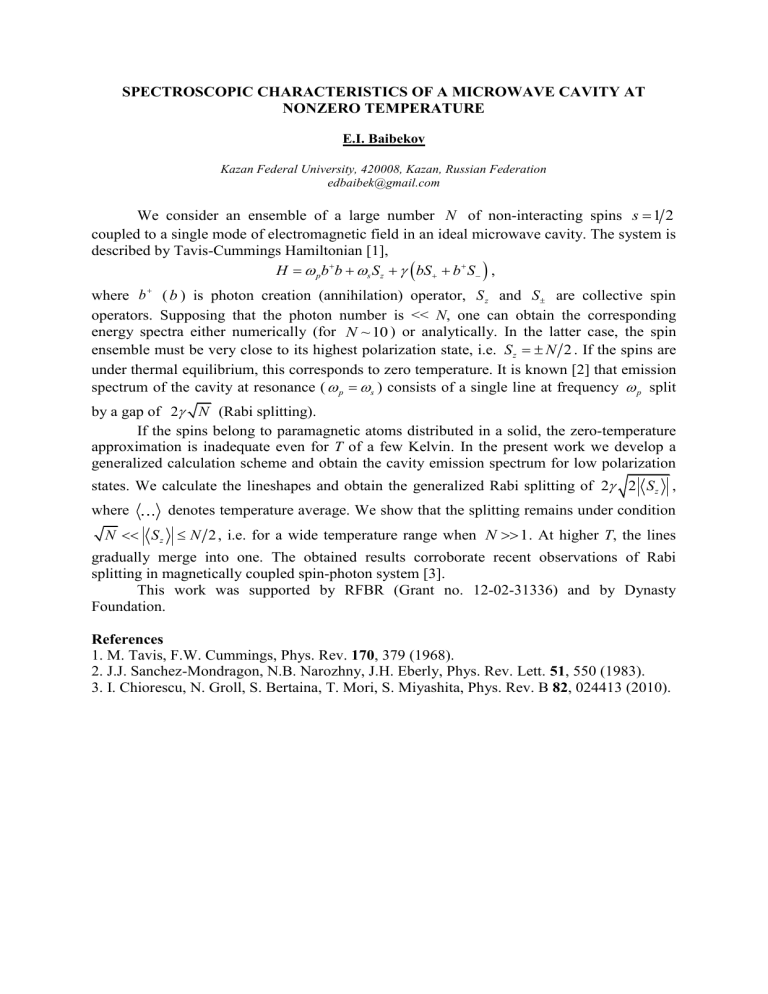
SPECTROSCOPIC CHARACTERISTICS OF A MICROWAVE CAVITY AT
NONZERO TEMPERATURE
E.I. Baibekov
Kazan Federal University, 420008, Kazan, Russian Federation edbaibek@gmail.com
We consider an ensemble of a large number N of non-interacting spins s
1 2 coupled to a single mode of electromagnetic field in an ideal microwave cavity. The system is described by Tavis-Cummings Hamiltonian [1],
H
p
S s z
bS
b S
, where b
( b ) is photon creation (annihilation) operator, S and S z
are collective spin operators. Supposing that the photon number is << N , one can obtain the corresponding energy spectra either numerically (for N ~ 10 ) or analytically. In the latter case, the spin ensemble must be very close to its highest polarization state, i.e. S z
N 2 . If the spins are under thermal equilibrium, this corresponds to zero temperature. It is known [2] that emission spectrum of the cavity at resonance (
p
s
) consists of a single line at frequency
p
split by a gap of 2
N (Rabi splitting).
If the spins belong to paramagnetic atoms distributed in a solid, the zero-temperature approximation is inadequate even for T of a few Kelvin. In the present work we develop a generalized calculation scheme and obtain the cavity emission spectrum for low polarization states. We calculate the lineshapes and obtain the generalized Rabi splitting of 2
2 S z
, where
N
S z
denotes temperature average. We show that the splitting remains under condition
N 2 , i.e. for a wide temperature range when N
1 . At higher T , the lines gradually merge into one. The obtained results corroborate recent observations of Rabi splitting in magnetically coupled spin-photon system [3].
This work was supported by RFBR (Grant no. 12-02-31336) and by Dynasty
Foundation.
References
1. M. Tavis, F.W. Cummings, Phys. Rev. 170 , 379 (1968).
2. J.J. Sanchez-Mondragon, N.B. Narozhny, J.H. Eberly, Phys. Rev. Lett. 51 , 550 (1983).
3. I. Chiorescu, N. Groll, S. Bertaina, T. Mori, S. Miyashita, Phys. Rev. B 82 , 024413 (2010).
